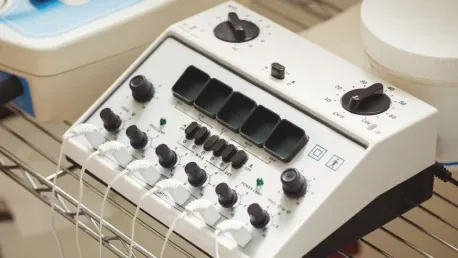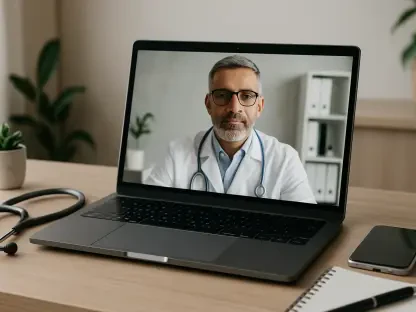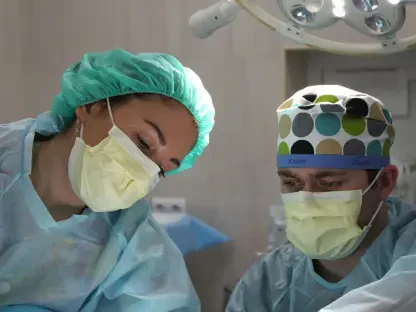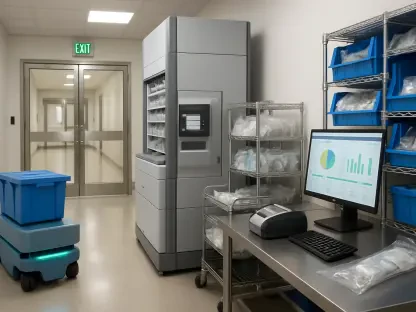In light of recent discussions and hearings, concerns about the cybersecurity vulnerabilities of legacy medical devices have intensified. Staffing cuts at the Health and Human Services (HHS) may further exacerbate these risks, affecting the Food and Drug Administration’s (FDA) ability to safeguard medical technologies. The significance of this issue was underscored during a House Energy and Commerce subcommittee hearing attended by experts and stakeholders from various sectors.
Cybersecurity Vulnerabilities in Legacy Medical Devices
The hearing titled “Aging Technology, Emerging Threats: Examining Cybersecurity Vulnerabilities in Legacy Medical Devices” spotlighted the significant challenges presented by outdated medical devices. Essential to these discussions was the critical role the FDA plays in partnering with healthcare providers and manufacturers to establish security standards. The FDA’s involvement is paramount in setting and enforcing guidelines that protect the integrity and functionality of medical technologies, ensuring patient safety. However, these efforts face numerous obstacles, particularly in the context of resource allocation and cooperation among different stakeholders.
Outdated Technology and Emerging Threats
Outdated medical devices pose a considerable risk due to their inability to keep up with modern cybersecurity threats. Many legacy devices were designed without robust security features, leaving them susceptible to attacks by sophisticated cyber actors. As technology progresses, the vulnerabilities in these older systems become more pronounced, creating gaps that malicious entities can exploit. Medical devices such as infusion pumps, patient monitors, and imaging systems often rely on antiquated software and hardware, which can be challenging to update or replace due to the costs and logistical complexities involved in such upgrades.
The FDA’s role in mitigating these threats is critical, as the agency collaborates with healthcare institutions to implement best practices in cybersecurity. However, this collaborative effort is heavily reliant on the availability of expert personnel and adequate funding. Without these resources, the capacity to enforce and maintain security standards diminishes significantly, putting patient data and healthcare infrastructure at risk. The importance of addressing these emerging threats cannot be overstated, given the potential life-threatening consequences of compromised medical devices.
Impact of Staffing Cuts on Device Security
Democratic members of the subcommittee expressed significant concerns about the announcement made by HHS Secretary Robert F. Kenney Jr. regarding the reduction of 20,000 positions. The proposed cuts, which include personnel from the FDA, could undermine the agency’s ability to enforce cybersecurity measures effectively. There is a profound fear among legislators like Yvette Clark and Frank Pallone Jr. that these reductions will lead to chaos and significantly hinder efforts to protect medical devices from cyber threats. The FDA employs dedicated subject matter experts specializing in the cybersecurity of medical devices, and their potential loss is seen as a substantial setback in the fight against cybercrime.
The concern extends to the broader implications of reduced staffing on the FDA’s overall operations. With fewer personnel, the agency might struggle to keep up with the rapid advancements in technology and the corresponding rise in sophisticated cyber threats. Maintaining an adequate workforce is crucial for the continuous monitoring, evaluation, and enhancement of security protocols. Without it, the FDA’s ability to respond to and mitigate cybersecurity threats may be severely compromised, making it essential to reconsider any steps that could weaken the agency’s effectiveness in safeguarding medical devices.
Expert Opinions and Insights
The significance of cybersecurity expertise in protecting legacy medical devices was a key focal point during the hearing. Experts underscored the vital role that knowledgeable professionals play in identifying, analyzing, and addressing cyber risks associated with outdated technologies.
Importance of Cybersecurity Expertise
Kevin Fu, a professor at Northeastern University and former acting director of Medical Device Cybersecurity at the FDA, emphasized the substantial challenges presented by the loss of subject matter experts in this field. The expertise of such professionals is indispensable in navigating the complex landscape of medical device security. Fu highlighted that maintaining consistent funding for cybersecurity initiatives is imperative, advocating against diverting resources from crucial areas such as the National Institutes of Health. Without dedicated cybersecurity professionals, the task of developing and enforcing comprehensive security measures becomes increasingly difficult, leaving medical devices more susceptible to exploitation.
Fu’s insights were a call to action, stressing the necessity of sustained investment in cybersecurity programs and personnel. The evolving nature of cyber threats demands a proactive approach, one that requires the expertise and vigilance of qualified professionals. The reduction in staffing levels at the FDA threatens to erode the progress made in securing medical devices, emphasizing the need for a strategic focus on retaining and supporting cybersecurity experts within the agency.
Collaborative Efforts and Readiness Gaps
Erik Decker, vice president and Chief Information Security Officer (CISO) at Intermountain Health, echoed similar concerns regarding the collaborative efforts between the FDA, medical device manufacturers, and hospitals. These collaborations are central to developing and implementing effective cybersecurity strategies. However, Decker highlighted a significant gap in readiness, noting that hospitals are currently implementing only about 55% of the Health Industry Cybersecurity Practices (HICP) recommended for medical device security. This gap reveals a pressing need for improved adherence to cybersecurity guidelines and enhanced coordination among all stakeholders involved.
Decker’s assessment suggests that while there are efforts to bolster security, more comprehensive measures are required to address the full spectrum of cyber threats facing medical devices. The cooperative initiatives between the FDA, manufacturers, and healthcare institutions must be strengthened to ensure a unified and effective response to the growing challenges. Enhancing compliance with established cybersecurity practices and fostering a culture of vigilance and preparedness are essential steps in closing the readiness gap and safeguarding medical devices from potential attacks.
Identified Cyber Threats and Challenges
The identification of various cyber threats and challenges was a crucial aspect of the hearing. Experts shared their insights into the diverse range of actors and tactics that pose risks to medical device security.
Various Cyber Threat Actors
Panelists at the hearing identified several categories of cyber threat actors, including nation-state actors, organized crime groups, hacktivists, and insider threats. Each of these groups has distinct motivations and methods, adding layers of complexity to the task of securing medical devices. Nation-state actors, for example, might target healthcare systems for espionage or disruption, while organized crime groups often seek financial gain through ransomware attacks or data theft. Hacktivists may aim to make a political statement, and insiders might exploit their access to compromise systems from within.
Greg Garcia, executive director of the Health Sector Coordinating Council Cybersecurity Working Group, highlighted the financial and staffing deficiencies within health systems that exacerbate vulnerabilities. Garcia announced plans for an upcoming white paper that will address these deficiencies and propose solutions to enhance cybersecurity protection across the healthcare sector. The recognition of diverse cyber threat actors underscores the need for a multi-faceted approach to cybersecurity, one that involves robust detection and response mechanisms tailored to the specific risks posed by each group.
Detection and Monitoring Difficulties
A consensus emerged among experts regarding the inadequate methods currently available for detecting cyber threats in medical devices. Michelle Jump, CEO of MedSec, and Christian Dameff, an emergency physician at UC San Diego Health, both highlighted the limited avenues for monitoring risks and the ease with which malicious software can evade detection. The sophisticated nature of modern cyber threats means that traditional security measures may not be sufficient to identify and mitigate risks effectively.
Jump’s and Dameff’s insights reveal that the cybersecurity landscape is evolving faster than the detection capabilities of many healthcare systems. The lag in real-time monitoring and the ability to respond swiftly to emerging threats significantly increase the risk of undetected compromise. This finding underscores the importance of investing in advanced security technologies and techniques that can provide deeper visibility into medical device networks, thereby enhancing the capacity to detect and address cyber threats in a timely manner.
Potential and Historical Threats
The hearing also delved into potential and historical threats to medical devices, emphasizing the importance of research and vigilance in mitigating these risks.
Research and Theoretical Threats
Although no publicized attacks have caused patient harm, research has shown that such threats are far from fictional. Erik Decker referred to a study from 2011 that demonstrated the theoretical risk of compromising an insulin pump to deliver fatal doses, showcasing the potential severity of cyber threats. This research highlights the pressing need for ongoing vigilance and proactive measures to safeguard medical devices. The possibility of exploiting vulnerabilities in these devices to cause harm necessitates a robust and dynamic approach to cybersecurity, one that anticipates and neutralizes potential threats before they materialize.
The research underscores the importance of a proactive stance in cybersecurity, emphasizing prevention and preparedness. Continual investment in the development of secure technologies, combined with rigorous testing and monitoring, is essential to ensure that medical devices remain safe and reliable for patient use. The theoretical risks presented by researchers serve as a sobering reminder of the critical need to address cybersecurity vulnerabilities comprehensively.
Recent Alerts and Broad Scope of Vulnerabilities
Recent discussions and hearings have highlighted increasing concerns about the cybersecurity vulnerabilities of aging medical devices. These worries have been amplified by potential staffing cuts at the Department of Health and Human Services (HHS), which could further compromise the Food and Drug Administration’s (FDA) ability to protect medical technologies. The House Energy and Commerce subcommittee recently held a hearing addressing these risks, attended by experts and stakeholders from different sectors to underscore the severity of the issue. Given that many legacy medical devices were not designed with current cybersecurity threats in mind, their increased connectivity to networks makes them particularly susceptible to cyberattacks. Additionally, manufacturing companies often face challenges in updating these devices with adequate cybersecurity measures. This situation calls for a concerted effort from both regulatory bodies and the medical device industry to safeguard patient health and secure medical technology against evolving cyber threats.









